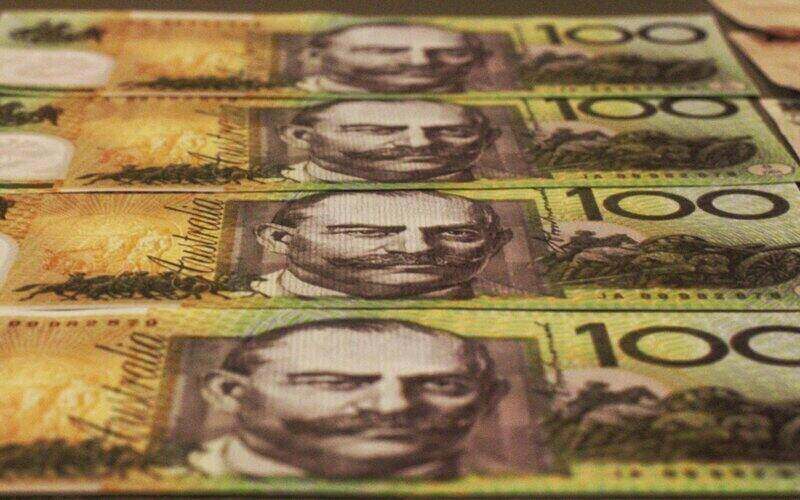Borrowers around Australia can breathe a sigh of relief today on news the central bank won’t be increasing the cash rate in May.
Though, the tension hasn’t yet been cut.
“Recent data indicate that, while inflation is easing, it is doing so more slowly than previously expected and it remains high,” RBA board said in a statement on Tuesday.
"The board expects that it will be some time yet before inflation is sustainably in the target range and will remain vigilant to upside risks.
"The path of interest rates that will best ensure that inflation returns to target in a reasonable timeframe remains uncertain and the board is not ruling anything in or out."
The cash rate is perhaps the biggest factor influencing interest rates, and it's currently the highest it’s been since late-2011.
The idea is that a higher cash rate puts financial pressure on borrowers, who then choose to slow their spending, resulting in a drop in demand within the Aussie economy.
The same goes for businesses and banks, who see the greater incentives to deposit money - and withdraw liquidity from the economy - rather than take on debt in the aim of growth.
An ease in demand typically leads to an ease in inflation as merchants and service providers presumably hesitate to raise prices lest they lose consumers’ business.
However, the approach doesn’t appear to be working as quickly as was initially assumed, leaving some experts wondering if the RBA could be forced to hike the cash rate further.
That’s the view of Judo Bank chief economic advisor Warren Hogan, who recently told the Savings Tip Jar podcast he anticipates a future in which the cash rate sits above 5%.
View this post on Instagram
“We're coming up to two years since they started hiking rates and it just doesn't look like it's getting the job done,” he said.
His comments came on the back of an upside inflationary surprise, with the cost of goods and services across the economy rising 1.0% quarter-on-quarter in the three months to March.
That saw inflation come in at 3.6% on an annual basis – 60 basis points higher than the topline of the RBA board’s target of 2% to 3%.
Though a large driver of this higher-than-expected inflation is now services - such as rents, education, power, and healthcare - and isn't totally put down to consumer spending.
The quarter-on-quarter uptick hasn't appeared to have forced the RBA board to lean back towards a hawkish tone.
That might be music to the ears of those who rejoiced when the nine-member board broke a now-long-standing tradition and didn’t even discuss a potential rate hike at its March meeting.
“Although inflation has not fallen as quickly as expected early in the year, retail sales and consumption are weak, and consumer sentiment remains low,” PropTrack senior economist Eleanor Creagh said.
“The board remains forward looking, anticipating further declines in inflation by the end of the year.”
Even Mr Hogan admitted to X that the latest retail sales figures – which found consumer spending dropped 0.4% month-on-month in March – contained “nothing … that support[s] a rate hike view”.
Still, the percentage of ASX traders tipping a rate hike doubled this week, rising from 3% of traders on Friday to 8% on Monday.
Will the RBA’s next cash rate move be a hike or a cut?
So far, none of the big four bank’s forecasts have shifted in the wake of today’s decision.
Economists at CommBank, NAB, Westpac, and ANZ are still predicting the central bank’s next move will be a cut, most likely in November.
However, seemingly-contrarian views like that of Mr Hogan have begun to emerge.
Take Rabobank, for instance.
Rabobank Australia senior strategist Benjamin Picton recently revealed the agriculture-focused institution is now expecting two rate hikes in 2024.
Rabobank has today revised our forecast on the @RBAInfo cash rate. We now project 2x 25bps rate hikes in Aug and Nov this year. We no longer expect any cuts in 2024 or 2025.
— Benjamin Picton (@BenPicton1) May 1, 2024
Removal of cuts is informed by our house view that Trump wins election and enacts inflationary tariffs.
Under Rabobank’s forecasts, the cash rate could be 4.85% come the end of this year.
Consequently, the bank increased rates on long-term deposits to the highest in the market - a move at odds with much of the recent changes.
Plenty of ASX traders also agree a hike could be on the cards for the future.
Current market pricing suggests a 40% chance that the board could hike by 25 basis points at its August meeting, according to Pepperstone head of research Chris Weston.
Image courtesy of the RBA



 Harry O'Sullivan
Harry O'Sullivan
 Harrison Astbury
Harrison Astbury

 Emma Duffy
Emma Duffy


